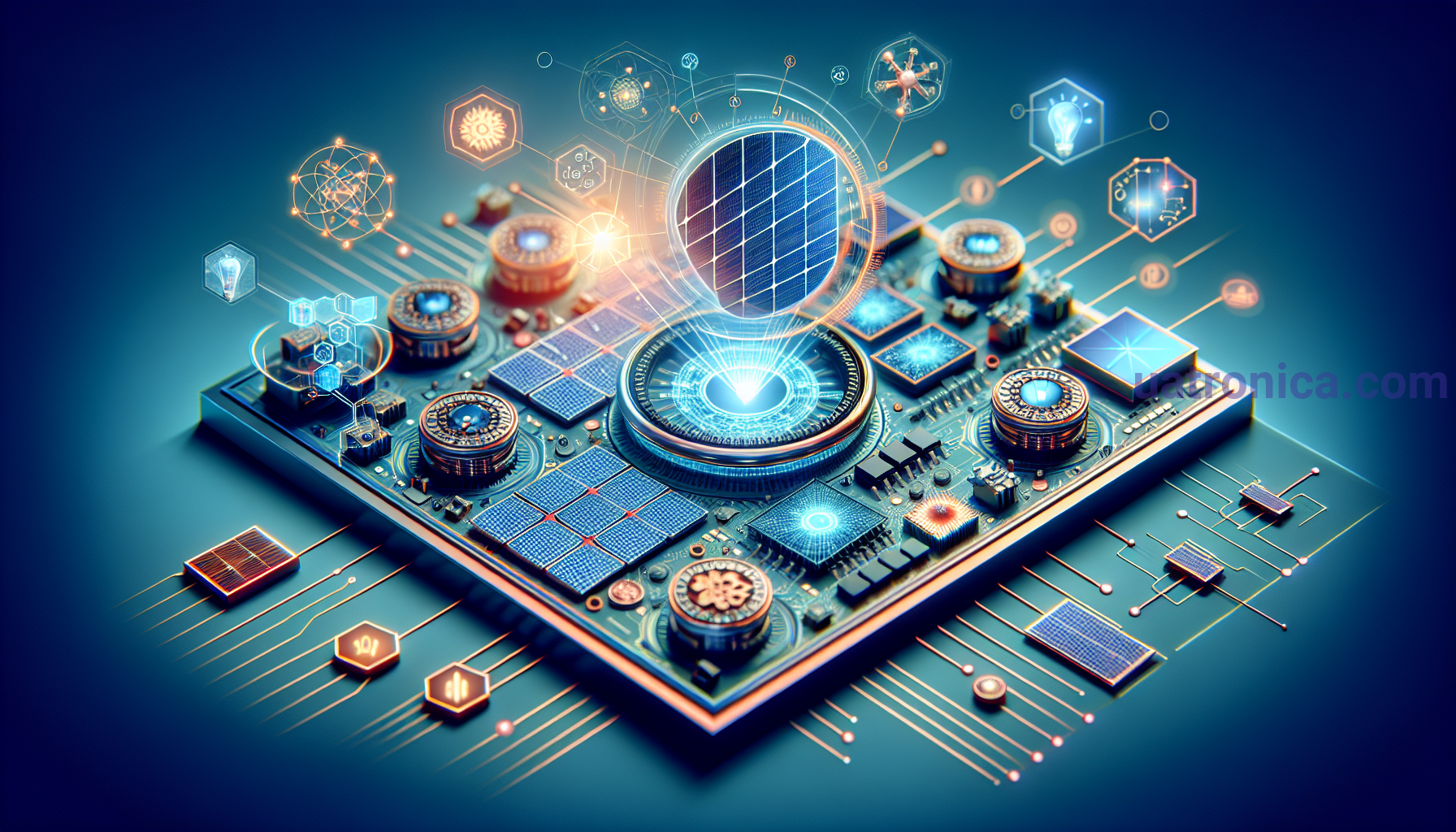10 Newest Scientific Discoveries in the World of Semiconductors: An Overview of Popular Innovations
Semiconductors are materials that have conductivities intermediate between those of conductors, such as metals, and insulators, such as plastics. Interest in semiconductors is constantly growing, as these materials play a crucial role in the development of the latest technologies, particularly in the field of electronics. In this article, we will present an overview of 10 of the latest scientific discoveries in the world of semiconductors, which cause a lot of interest in the wide circles of electronics specialists and hobbyists.
1. New materials based on 2D nanostructures
One of the most promising areas of research in the field of semiconductors is the use of two-dimensional (2D) nanomaterials. Graphene, a monolayer structure of carbon, is one of the best-known representatives of 2D nanostructures. It has unique electronic properties that make it an excellent material for use in electronics.
- Graphene is a single-layer carbon material that has broad prospects in the fields of electronics, photonics, and electrochemistry.
- Graphene's molecular spin state makes it an excellent candidate for spin-based electronics.
2D nanostructures based on other materials such as molybdenum disulfide (MoS2) and chalcogenides, are also the object of active research. These new materials have the potential to create electronic devices with low power consumption and improved performance and scalability.
2. Multilayer nanostructures
Multilayer nanostructures are structures created by connecting several layers of semiconductor materials into a thin stack. This approach allows combining different materials to obtain new properties. For example, a stack of graphene and monolayer carbon can be used to create devices with electronic and spin properties at the same time.
3. Quantum dots
Quantum dots are nanostructures, the size of which is in the range from several to several tens of nanometers. They have unique optical and electronic properties. For example, quantum dots can emit light of different wavelengths depending on their size.
Quantum dots can control the color of the light they emit, making them ideal materials for use in high-end displays and LEDs. In addition, quantum dots are used in biomedical research because they can serve as nanosensors and fluorescent markers.

4. Topological insulators
Topological insulators are materials that have certain electronic properties that distinguish them from ordinary insulators and conductors. This class of materials is of particular interest to researchers because of their potential to realize extremely fast and efficient electronic devices.
Topological insulators have a unique property - conductivity on the surface of the material, but insulation inside. This makes them interesting for applications in quantum computing and high-speed data transmission devices.
5. Ferromagnetic semiconductors
Ferromagnetic semiconductors are materials that simultaneously have ferromagnetic and semiconducting properties. These materials are of great interest in the context of creating spin-based electronic devices such as magnetic transistors and magnetic memories.
Ferromagnetic semiconductors allow control of electronic states with different spin structures, making them potentially important for spin-based electronics.
6. Veletronics
Veletronics is a new direction in semiconductor physics that studies the electric field-controlled reach of localized states in the electronic structure of a material. This approach potentially allows the creation of new electronic devices with improved performance and low power consumption.
7. Quantum information processing
Quantum information processing is a new approach to data processing and storage, which is based on the properties of quantum mechanics. This line of research has the potential to create extremely fast and powerful computing systems.
One of the key elements of quantum information processing is a qubit, a quantum analog of a classical bit. A qubit can be in a state of zero and one at the same time, which allows for parallel calculations and storage of large amounts of information.
8. Efficient solar batteries

The development of efficient solar cells is one of the current directions in the field of semiconductors. Solar energy can potentially become one of the main sources of energy in the future, since its use is not accompanied by environmental pollution.
The unique electronic and optical properties of semiconductors make them ideal materials for making solar cells. Current research is aimed at improving the energy conversion factor of the solar cell by optimizing the optical, electronic and spatial characteristics of materials.
9. Electronics based on organic materials
Organic semiconductors create new opportunities for the development of organic electronics. These materials have unique electronic and optical properties, which makes them attractive for the creation of low-energy and inexpensive electronic devices.
Organic semiconductors are used in the production of electronics such as organic transistors, organic LEDs, and organic solar cells. However, they require further research to improve their electronic and mechanical properties, as well as their stability under operating conditions.
10. Quantum dot based on perovskite
Perovskite-based quantum dots are a new class of materials that are attracting active interest in the scientific community. They have excellent optical properties, in particular, a high quantum yield and an extended spectrum of light absorption.
Perovskite-based quantum dots can be used to create a new generation of LEDs, solar cells, and photodetectors. They have the potential to make these electronic devices more efficient and cheaper due to ease of production and high quality of emitted light.
Product Discussion
In this article, we have presented an overview of the 10 most recent scientific discoveries in the world of semiconductors. These innovations open up new opportunities for the development of electronics and other related industries. Some of these new materials and technologies are already used in commercial products, while others still require further research and development.
As can be seen from the review, semiconductors occupy a central place in the development of modern electronics. They allow to create new electronic devices with improved functional characteristics and reduced production costs. In the future, we can expect even greater integration of semiconductor materials into our everyday life and industry.
We recommend that you familiarize yourself with the product available on the site in more detail. Connector DS2411R-TR Max 3SK any electrician and electronic specialist will need when installing and repairing electrical devices. Detailed information and user comments will help you choose the right product for your project.










